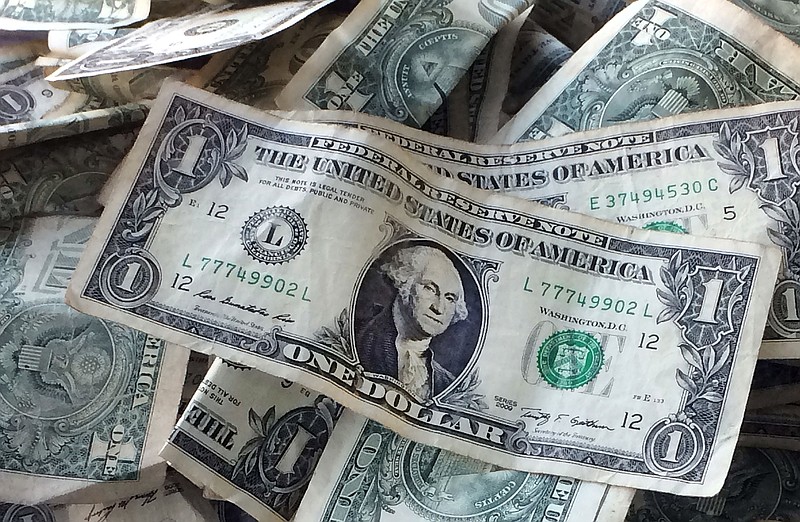U.S. consumer prices rose in July by more than expected on a jump in auto and apparel costs, though inflation remained broadly muted after the pandemic suppressed demand.
The consumer price index rose 0.6% from the previous month after a 0.6% gain in June, Labor Department figures showed Wednesday. The median forecast in a Bloomberg survey of economists called for a 0.3% increase. Compared with a year earlier, the gauge increased 1%, after June's 0.6% rise.
Excluding volatile food and fuel costs, the so-called core consumer price index -- viewed by policymakers as a more reliable gauge of price trends -- rose 0.6% from the previous month, the biggest jump in almost three decades, after a 0.2% increase in June. On an annual basis, core inflation measured at 1.6%, a four-month high, compared with 1.2% in June.
The gain in consumer prices reflects the rebound in demand for goods and services from the depths of the pandemic-induced lockdowns earlier this year, suggesting inflation is closer to returning to the pre-crisis pace than experts had thought.
[CORONAVIRUS: Click here for our complete coverage » arkansasonline.com/coronavirus]
"July's data confirmed that inflation followed the sharp rebound in consumer spending this summer [and] stabilized the downward trend in prices," said a research note from Contingent Macro Advisors. "This report was not enough to turn the inflation trend higher, but it helped to alleviate near-term concerns about deflationary scenarios for the economy."
Deflation, or falling prices, can hurt the economy by nudging consumers to delay spending because they believe prices will be lower in the future.
Federal Reserve policymakers have seen little threat of inflation and expect to hold interest rates near zero for the foreseeable future, though investors in Treasury notes have signaled they expect price gains to pick up amid extended monetary stimulus.
"You had significant contributions from categories that basically are just payback from previous drops. That's not a sustained increase in inflation," said Brett Ryan, senior U.S. economist at Deutsche Bank Securities Inc. "The bigger picture here is that you're going to have a persistent output gap and elevated unemployment, and that's going to put downward pressure on wages."
Prices for clothing rose 1.1% after a 1.7% jump in June. Used cars rose 2.3%, the most since early 2010. New vehicles increased 0.8%, the biggest gain in nine years.
Car insurance costs posted a record monthly increase of 9.3% after company rebates in previous months that accounted for less driving. Airfares posted the biggest monthly gain in 21 years, though prices remained 23.7% below year-earlier levels with passenger counts still depressed.
The cost of groceries fell 1.1% from the previous month, the first decline in almost a year. It provided some relief to consumers who were facing more expensive food while sheltering at home.
Gasoline prices jumped 5.6% in July and accounted for about a quarter of the gain in the overall consumer price index. Still, pump prices were down 20.3% from July 2019.
According to auto club AAA, the average price of a gallon of regular-grade, unleaded gasoline on Wednesday in the United States was about $2.18, down from $2.20 in mid-July. In Arkansas, the average price for a gallon was $1.87 on Wednesday, compared with $1.89 a month ago.
Oil prices rose Wednesday after U.S. government data showed stockpiles decreased and refiners increased processing rates, giving the industry hope that a much-awaited recovery in demand is underway as the summer driving season nears an end.
Futures in New York rose as much as 2.7% before paring gains. Domestic crude supplies declined by more than 4 million barrels last week. Benchmark U.S. crude oil for September delivery rose $1.06 to settle at $42.67 a barrel Wednesday. Brent crude oil for October delivery rose 93 cents, to $45.43 a barrel.
While U.S. consumer prices in July generally rose more than economists expected, the news was somewhat worse for people over 62.
A separate Bureau of Labor Statistics index that tracks prices associated with older consumers climbed 1.3% last month from a year earlier. The agency this month made the data available on its website; previously it was provided only on request.
The index shows inflation for decades has been rising at a faster clip for the elderly than for the general public. That's because the index assigns higher weights to items -- including medical services and housing -- based on their relative importance to older people.
In 1987, Congress directed the Bureau of Labor Statistics to begin calculating a consumer price index for the elderly. The bureau developed the index and reconstructed it back to the early 1980s.
Information for this article was contributed by Olivia Rockeman, Andrew Husby, Yelena Shulyatyeva, Alex Tanzi and Andres Guerra Luz of Bloomberg News and by Paul Wiseman, Stan Choe and Alex Veiga of The Associated Press.

